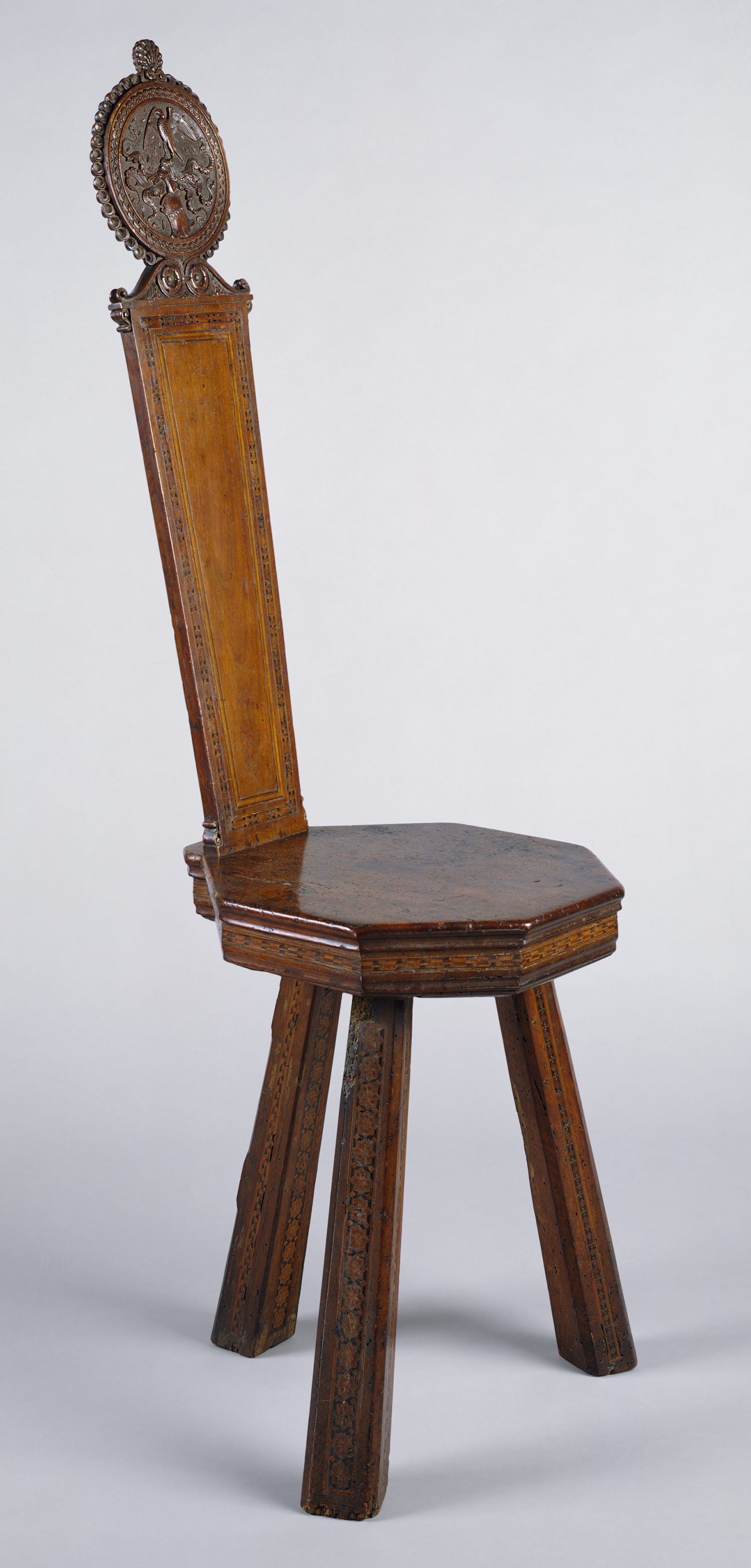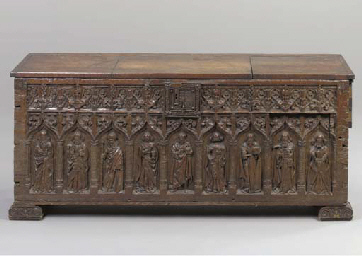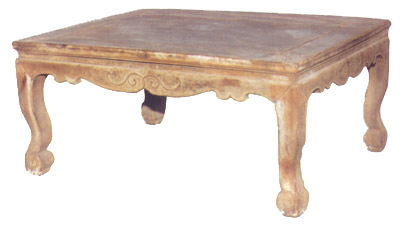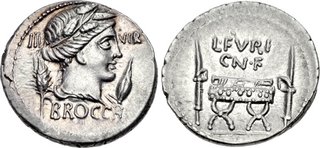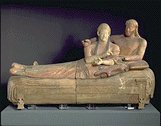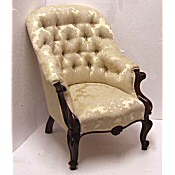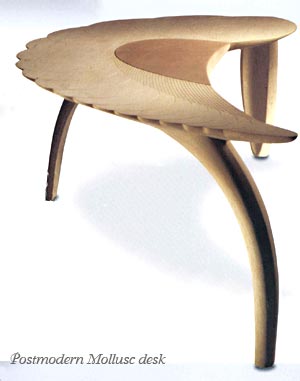The structural developments of Renaissance fitted and non fitted furniture included the evolution of the throne chair, which had usually had a chest base in the Middle Ages, into a lighter style that was supported by pillars around the bottom rail. Open chair arms became more popular, reflecting the trend towards lighter furniture.
The French caquetoire (gossip) chair was created as a reaction to changing fashions, and had a wide trapezoidal seat that was designed to accommodate flowing skirts.
Upholstery became more common, although the majority of handmade furniture - chairs and benches - still had hard wooden surfaces.
New types of case furniture developed, such as the dresser, that evolved from the medieval sideboard and was constructed from various combinations of pillars, shelving and cabinets enclosed with doors.
The cabinet, used in medieval Europe to store and display silver plate goods now became more opulent.
The treasures of a Renaissance household usually included jewellery and various artistic trinkets requiring numerous small drawers for their safe storage.

These small drawers were were quite often lined with fine cloth to protect the contents. Cupboards in southern Germany, which had originally been created by placing one chest on top of another, developed into a more useful storage space without a frieze dividing the top and bottom half, although the old form remained popular until around 1600.
Long dining tables were still made from a simple top on trestles, as in the middle Ages. There were no fixed dining areas in noblemen's houses so tables needed to remain portable.
--------------------------------
next week we will be delving into the 17th century where furniture is getting much more grand.


